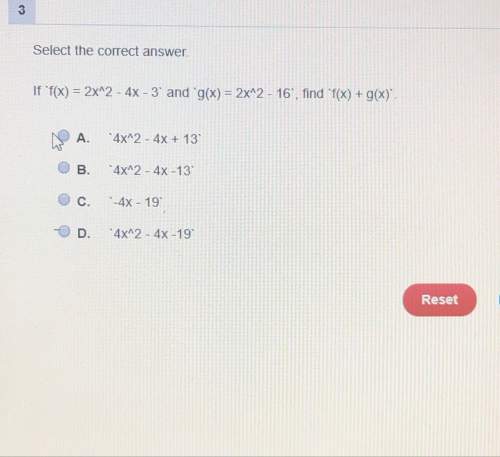
Mathematics, 26.09.2021 14:00 paulusl19
Each letter in the ordered list A, B, C, D, E, F represents a number. The numbers
are not necessarily different, which means that two letters can represent the
same number. The sum of the values of any three consecutive letters (three
letters in a row) is 20. When B = 6 and D = 9, what is the value of F?

Answers: 2


Another question on Mathematics

Mathematics, 21.06.2019 16:30
What is the order of magnitude for the number of liters in a large bottle of soda served at a party
Answers: 2

Mathematics, 22.06.2019 01:30
Which of the following points is a solution to the system of equations shown? y - x = -1 x + y = -5
Answers: 2

Mathematics, 22.06.2019 02:30
(2, 4) (2, 1) (6, 12) (4, -5) (-2, 4) |(2, -4) (6, -12) (-4,5) quadrilateral abcd is reflected over the x-axis. quadrilateral abcd is translated 2 units right and 1 unit down. quadrilateral abcd is dilated by a scale factor of 3. quadrilateral abcd is rotated 180° clockwise about the origin. reset next
Answers: 3

You know the right answer?
Each letter in the ordered list A, B, C, D, E, F represents a number. The numbers
are not necessar...
Questions

Arts, 22.01.2022 05:30


Mathematics, 22.01.2022 05:30





Biology, 22.01.2022 05:30

Mathematics, 22.01.2022 05:30



Computers and Technology, 22.01.2022 05:30


Mathematics, 22.01.2022 05:30


Mathematics, 22.01.2022 05:30


Mathematics, 22.01.2022 05:30





